MARKET OVERVIEW
The Global Resistive Multi-Touch Screen Market, within the very niche segment of human-machine interface technology, will reach deeper into non-nerdy applications in the future. Although the focus of the industry has been concentrated in the past on retail, industrial control, and automotive interfaces, the coming transitions will be triggered by new usage models and behavioral changes from different contexts. This market does not follow a path-linearly on the basis of volume and unit economics. Instead, the trends will be toward adaptive integration, collaborative ecosystems, and custom-driven innovations.
The Global Resistive Multi-Touch Screen market is expected to pave its way into many unconventional areas, which have previously not been priorities for the touch screen application, apart from the usual places. These will include rural health systems, off-grid educational institutions, or even field research stations, which need clearly the robustness and simplicity of resistive technology. Here, the access to emerging capacitive systems could not be had in the economics and the environment available. In such settings, resistive technology fills a crucial gap, not by duplicating the high-end user experience of more advanced screens, but by providing real use where nothing else fits.
The digital inclusiveness story will create new roles for resistive screens. Within new flavors, icons, and enablers of public schemes will realize nearly increased value across under-connected regions including parts of Africa, Southeast Asia, and Latin America. In such cases, touch surfaces can be made functional using any globed hand or stylus. This functional flexibility will also be contributed through connecting local user interfaces that are culturally aligned and linguistically adaptable. Therefore, it would be incorrect to refer to the Global Resistive Multi-Touch Screen market as a fading segment; rather, it is expected to be an enabler of targeted access.
Likewise, the industry will be expected to bring in multidisciplinary collaboration that would hence shape the usage of resistive screens as well. For instance, input by these capacitive screens will be intolerant for scientific expeditions or research on extreme weather zones or chemically volatile environments. Meet such requirements by being input-effective under moisture, dirt, and even electromagnetic interference: the Global Resistive Multi-Touch Screen market will. Its resistance to unpredictable environments will open new windows for defense training modules, disaster relief communications, and control interfaces for space equipment.
The shift will be from cost-led production into purpose-built innovation in manufacturing strategy, leaving only traces of cost-leading strategies. Designers and engineers will concentrate on form factors more suited to modular devices, hybrid displays, and foldable applications.
Global Resistive Multi-Touch Screen market is estimated to reach $5056.6 Million by 2032; growing at a CAGR of 8.5% from 2025 to 2032.
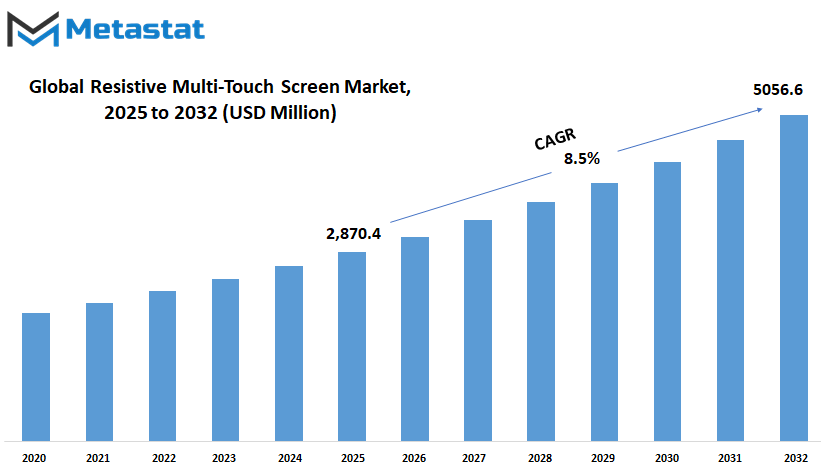
GROWTH FACTORS
It is attributed to many weights of the driving factors that make the Global Resistive Multi-Touch Screen market booming by one of the key factors. An increasing number of interactive displays in the retail and hospitality sectors is high on the list. The two sectors have increasingly employed interactive screens for customer engagement and operational management. Increasing use of touch screens in automobiles is also a factor that serves for the market's growth. Between operation and entertainment systems, touch screens have now become a norm in vehicles to control almost everything. Therefore, this wide adoption in the automotive industry is going to keep spurring demand for resistive multi-touch displays.
With these growth drivers, the market still faces challenges that can limit its size. Among major ones is stiff competition from other forms of touchscreen technology, such as capacitive and infrared screens. These displays usually possess better properties, such as high sensitivity and durability, making them favorably used for specific applications, thus making resistive multi-touch screens less competitive in some markets where these component features matter most.
Relative insensitivity and lessened durability as compared to the other touch technologies would be another aspect that would be comparative obstacles against the growth of the resistive multi-touch screen market. An example of this would be how capacitive screens are more responsive and can detect multiple touch points more accurately. These screens have been adopted widely in smartphones and tablets, thereby putting resistive screens at a kind of disadvantage in some sectors of consumer electronics.
Nonetheless, despite the challenges and obstacles, such industries would have good future market opportunities for resistive multi-touch screens. One of such bright opportunities is the application of these screens for numerous purposes in the so-called industrial and medical. Such environments design these resistive multi-touch screens to work under high-temperature conditions as well as with gloved hands for operation. These environments include factories and warehouses, which require demanding scenarios. Resistive screens are also used in the medical field, especially for devices where accuracy really matters. As usage continues to rise, the need for such devices will likely rise, which consequently means the demand for resistive multi-touch screens will increase. It is actually a good growth area for the market in the coming time.
In conclusion, the Global Resistive Multi-Touch Screen market is likely to grow in competition and restraint by other technologies, but that growth will be fostered by increasing demand from some sectors, such as retail, hospitality, automotive, industrial, and medical applications. Emerging needs from these sectors will keep opening up the market to new avenues for growth and innovation.
MARKET SEGMENTATION
By Type
The Global Resistive Multi-Touch Screen market is expanding, spurred by the requirements of more responsive and cost-effective touchscreen technology. The segmentation includes Four Wire Type, valued at $1635.7 million; Five Wire Type, and Others among the various types present in this market. These types are primarily differentiated by construction and their response to touch input. The Four Wire Type is a simpler construction, making it less expensive, and therefore more popular in applications where high precision is not necessary. It is mostly chosen for an optimum combination of performance and price for devices like ATMs, kiosks, and some older mobile phones.
The Five Wire Type, on the other hand, is designed for durability and accuracy. It can take a lot of abuse over time with minimal degradation of touch sensitivity. This makes it preferred in environments where the screen would frequently be touched by many hands, for example, medical devices or industrial machines. Although it is more expensive than the Four Wire type, its reliability and life expectancy make it a choice that many industries are willing to pay for.
The "Others" category subsumes any types that are not Four or Five Wire-type resistive touchscreen devices. They could be special designs or newer variations still probing their position in the market. Although not widely used as of yet, they have specific features that could gain traction as technology advances and users' requirements change.
The requirements for a touchscreen that is cheap, easy, yet sturdy have made for growth in the market. Unlike the other touchscreens, the resistive screens work very well when touched with a stylus or glove; hence, they become ideal for specific working environments, like outdoors or industries where users cannot infract touch in screen directly with bare fingers.
The Global Resistive Multi-Touch Screen Market remains steadily grown for the value of industry towards dependable and flexible touch solutions. Impressive will its growth become as interest in more robust or specialized types increases, with Four Wire Type already sucking $1635.7 millions of share. There will be an increasing demand for all types in this segment as new applications for this technology emerge, especially in commercial and industrial fields.
By Application
Global Resistive Multi-Touch Screen Market is in demand within many sectors. Its purpose is to allow the operation of both arms for contacting further points of the device at the same time. Resistive touch screens are unlike other types of touch screens as they respond to each touch with pressure thereby formidably fitting in areas where the user either wears gloves or uses a stylus. They now have been divided into various sectors based on application i.e., Mechanical Engineering, Automotive, Aeronautics, Marine, Oil and Gas, Chemical Industrial, Medical and other domains. These are country-specific applications where each field will use resistive multi-touch screens on the basis of flexibility and reliability of these screens.
In the field of mechanical engineering, these screens become beneficial for running heavy machines or tools that employ highly precise input. They provide quick access to controls even in dust and industrial environments. In the automotive industry, they have improved the user interface of infotainment systems, rendering them more interactive and simpler to operate. These are also used in diagnostics and monitoring systems of vehicles, where the additional aspect of clarity and fast response is achieved. Cockpits and maintenance systems in aeronautics employ them where conditions demand utmost accuracy and reliability. These work quite well in such high-pressure environments since they are least affected by dirt, moisture, or temperature.
For the marine industries, there is also application value in this technology. On ships or even underwater vehicles, the touch screens need to work in wet conditions, and this type of resistive screen can manage that better compared to other types. The oil and gas industry usually operates in rugged terrains. Workers can be gloved here, but resistive touchscreens can still detect their input and help in smooth controlling of equipment. The chemicals industries mostly demand screens that are not easily destroyed and can function even under spillage or exposure to different types of substances. Resistive types of screens are very effective.
This type of screen also proves beneficial in the medical field because it is more likely to clean devices or be used by staff working with gloves. They are intended to be used with patient monitoring systems, as one example, diagnostic systems, and even in some surgical instruments. There are also various other applications in categories in which strong, easy-to-use screens are needed in unpredictable or rough conditions. As industries increasingly embrace technology for everyday activities, reliable, fast-action touchscreens will be more in demand. And so will this market as these screens become more critical in both traditional and modern industrial applications.
By Size
The Global Resistive Multi-Touch Screen market is on a steady growth path due to the input of technology in enhancing human interaction with digital devices. These touch screens respond to varying pressures and hence are suitable in environments where the users may be gloved or require a high level of precision, like medical, industrial, or retail environments. Unlike capacitive screens that act in conjunction with the electrical properties of the human body, resistive screens, on the other hand, are operated by any form of pressure from an object, making them more versatile and affordable.
In terms of size, the market is classified into four categories, including Small (1-7 Inches), Medium (8-14 Inches), Large (15-24 Inches), and Extra Large (25+ Inches). Small screens are mostly found in handheld gaming consoles, GPS systems, and small POS terminals. The small screen's portability, coupled with easy integration, makes it suitable for compact products requiring basic touch interaction. Medium-sized screens are handled by tablet computers, diagnostic tools, and control panels. They provide adequate space for navigation but still have manageable size, in preference for both consumer and professional applications. In comparison, large screens are usually meant for the use of kiosks and industrial machines and even for certain desktops. They come in handy in cases where multiple touch points are needed, or users could become exhausted working with the display area. Extra-large screens are commonly implemented in public information displays, digital whiteboards, and interactive signage. Therefore they assist in collaborative environments like classrooms, corporate settings, and exhibition halls.
The demand for resistive multi-touch screens persists due to their economic viability and ruggedness against dust and water, which suits them into inhospitable working environments. Some other factors that favor their wide acceptance are presence in areas where extreme temperatures are the order of the day, areas wherein the capacitive screens would probably struggle. Despite other types of touchscreen gaining popularity, resistive technology has maintained its place in industries where durability and reliability take precedence over sleek design.
Manufacturers are working on improving sensitivity and the lifespan of these screens in response to increasing demands from users. The demand for touchscreen-based interfaces will keep on increasing as more industries venture into the digital solution path. A stable rate of growth can be expected for this market, especially for industries that appreciate function and reliability over fanciness and appearance. Newer technologies will continue to emerge, yet resistive multi-touch screens will remain a practical choice and a viable solution for many specialized applications.
|
Forecast Period |
2025-2032 |
|
Market Size in 2025 |
$2870.4 million |
|
Market Size by 2032 |
$5056.6 Million |
|
Growth Rate from 2025 to 2032 |
8.5% |
|
Base Year |
2024 |
|
Regions Covered |
North America, Europe, Asia-Pacific, South America, Middle East & Africa |
REGIONAL ANALYSIS
Based on geography, the global Resistive Multi-Touch Screen market is divided into North America, Europe, Asia-Pacific, South America, and Middle East & Africa. North America is further divided in the U.S., Canada, and Mexico, whereas Europe consists of the UK, Germany, France, Italy, and Rest of Europe. Asia-Pacific is segmented into India, China, Japan, South Korea, and Rest of Asia-Pacific. The South America region includes Brazil, Argentina, and the Rest of South America, while the Middle East & Africa is categorized into GCC Countries, Egypt, South Africa, and Rest of Middle East & Africa.
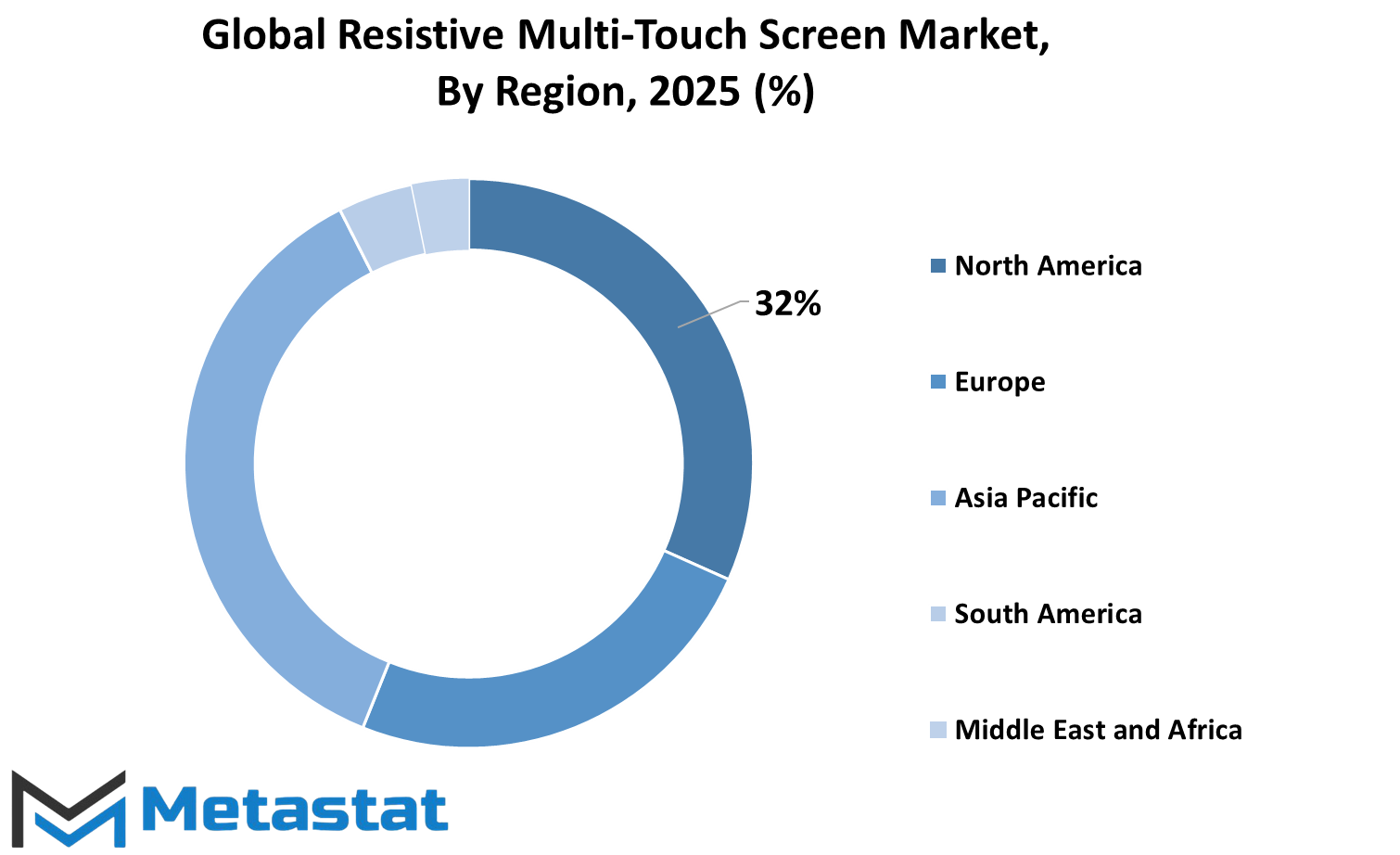
COMPETITIVE PLAYERS
The Global Resistive Multi-Touch Screen Market is scattered across varied geographies, contributing to total demand and growth. Based on geography, the market has been segmented into regions-defining North America, Europe, Asia-Pacific, South America, and the Middle East & Africa. North America refers to the United States, Canada, and Mexico. It shows a robust mark because majorly tech companies exist and because of the growing usage of touch screen technologies across various industries, such as healthcare, retail, and education. Europe comprises the UK, Germany, France, Italy, and the Rest of Europe. Gradual growth is displayed in this region with the advancement in automotive and industrial applications, since resistive touch screens are still acceptable due to their cost-effective and durable properties.
Asia-Pacific, which is also among the fastest-growing markets, can be segregated into India, China, Japan, South Korea, and the rest of Asia-Pacific. Basically, these proofs consist of: Increased use of consumer electronics such as smartphones, tablets, and the increasing number of kiosks, linked with growing industrial automation. Also, for countries like China and India, large populations combined with growing techno-economical industries are key factors in future expansion target areas of the market. The South America region includes Brazil, Argentina, and the Rest of South America. This region is seeing an increase in demand because of the spreading digital services and increasing focus on private and public infrastructure upgrading, though it is not as large as Asia-Pacific or North America.
This region includes GCC Countries, Egypt, South Africa, and the Rest of Middle East & Africa. Very slowly, the region adopts touch screen technology for sectors such as education, retail, and healthcare. Growth here is not fast compared with other regions, but more opportunities are expected out of investments in smart infrastructures and tech-driven solutions. Each of these regions plays a role in the development and future trends of the global Resistive Multi-Touch Screen market. The knowledge of contribution from each area helps companies plan strategically on investment locations, locally satisfying their needs, and on future preparations. This geographical demarcation makes market behavior analysis easy and prepares strategies that will be aligned with regional demands.
Resistive Multi-Touch Screen Market Key Segments:
By Type
- Four Wire Type
- Five Wire Type
- Others
By Application
- Mechanical Engineering
- Automotive
- Aeronautics
- Marine
- Oil And Gas
- Chemical Industrial
- Medical
- Other
By Size
- Small (1-7 Inches)
- Medium (8-14 Inches)
- Large (15-24 Inches)
- Extra Large (25+ Inches)
Key Global Resistive Multi-Touch Screen Industry Players
- Apex Material Technology Corporation
- SCHURTER Group
- Mildex Optical Inc.
- Fujitsu Limited
- Eagle Tech
- Reshine Display (HK) Technology Co., Limited
- Super Elite Technology Co., Ltd.
- Touch International, Inc.
- DMC Co., Ltd.
- NKK Switches of America Inc.
- Pannam Imaging
- Pyramid Computer GmbH (Faytech)
- Electronic Imaging
- Newhaven Display International, Inc
- Butler Technologies
WHAT REPORT PROVIDES
- Full in-depth analysis of the parent Industry
- Important changes in market and its dynamics
- Segmentation details of the market
- Former, on-going, and projected market analysis in terms of volume and value
- Assessment of niche industry developments
- Market share analysis
- Key strategies of major players
- Emerging segments and regional growth potential



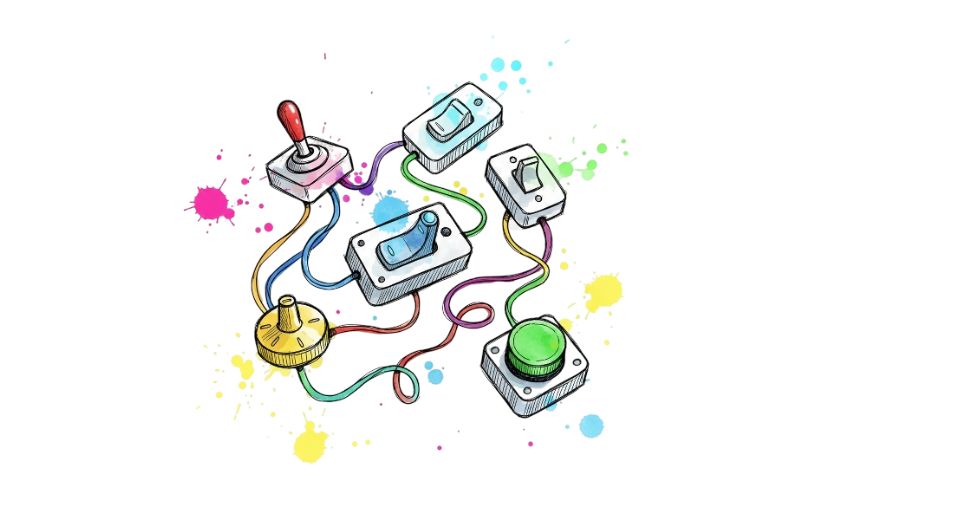

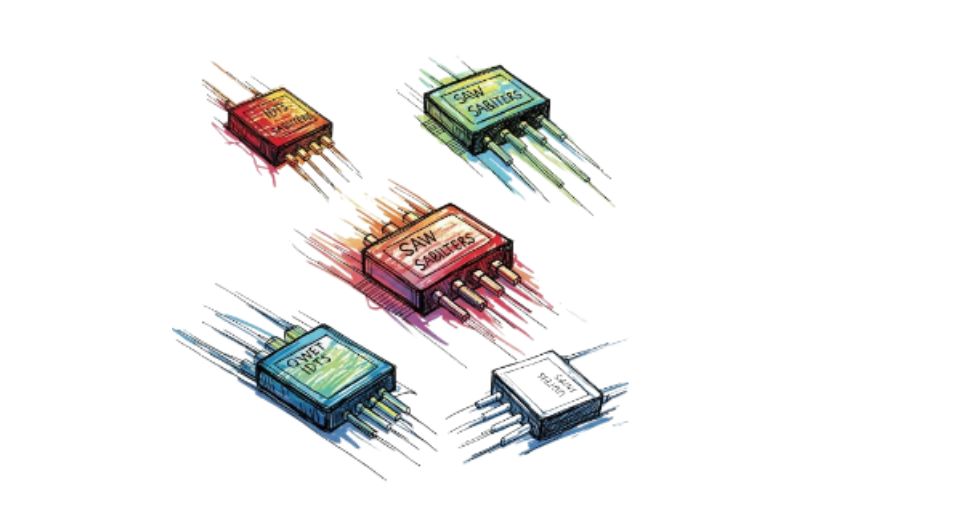
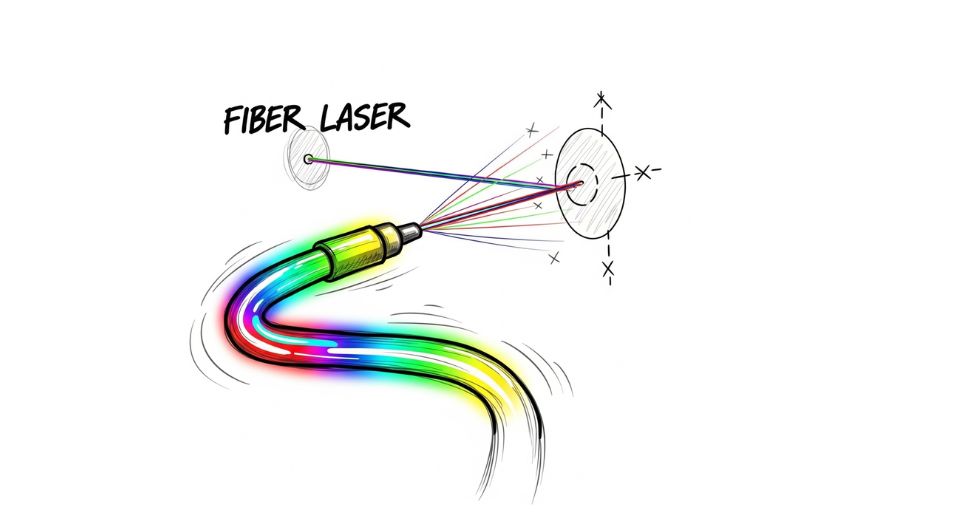

 US: +1 3023308252
US: +1 3023308252






